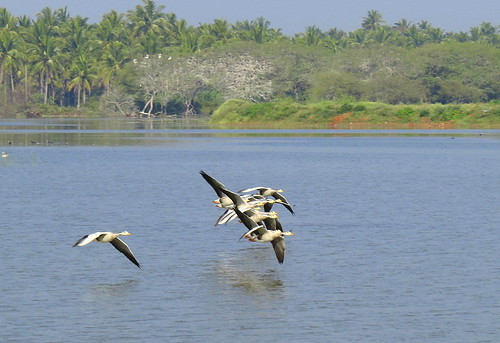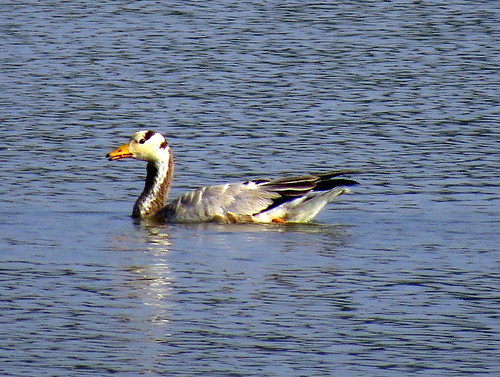Winter is always a good season for an amateur naturalist like me; the cool weather suits me and I can certainly spend far longer outdoors without getting tired out by the relentless Indian sun. I like to go out as much with friends as possible, and come across interesting things…literally, from far and near.
One of the “far” birds that we went to see are the bar-headed geese, which fly in from Mongolia and other parts in the far north, to our relatively warmer climes.
At Magadi lake at Gadag district, they arrive in large numbers; however, if you are not “chasing numbers”, lots of them can be seen at Kabini, and even nearer, at Hadinaru kere (lake in Kannada) near Nanjangud. Here is one handsome bird.
The birds flying over the road from the fields, where they forage, on to the lake to settle down, is an amazing sight. One can only imagine what they must look like, flying through the high passes of the Himalaya, on their way here!
However, the nearby, and the small, can also be equally awe-inspiring and riveting. On a recent trip to the Valley School area, off Kanakapura Road near the NICE Junction in Bengaluru, we were done and were returning to our cars, when a small movement on the other side of a chain link fence caught my eyes.
It was a female
and there was no need to ask why she has been given that name. Look at the perfection of the home she is creating for her young ones!
She will find a spider or a caterpillar, stun (not kill) it, and put it in the home she has created. She will then lay her eggs on the paralyzed creature, so that her eggs, when they hatch into larvae, will have fresh meat and protein to feed on. All this for children she will never see…because once she’s put her young ones in “the pot”, off she flies, as you can see in this short video.
So…all creatures, great and small, whether they come from some faraway place on our planet or make their home right near us…are an endless source of fascination!


